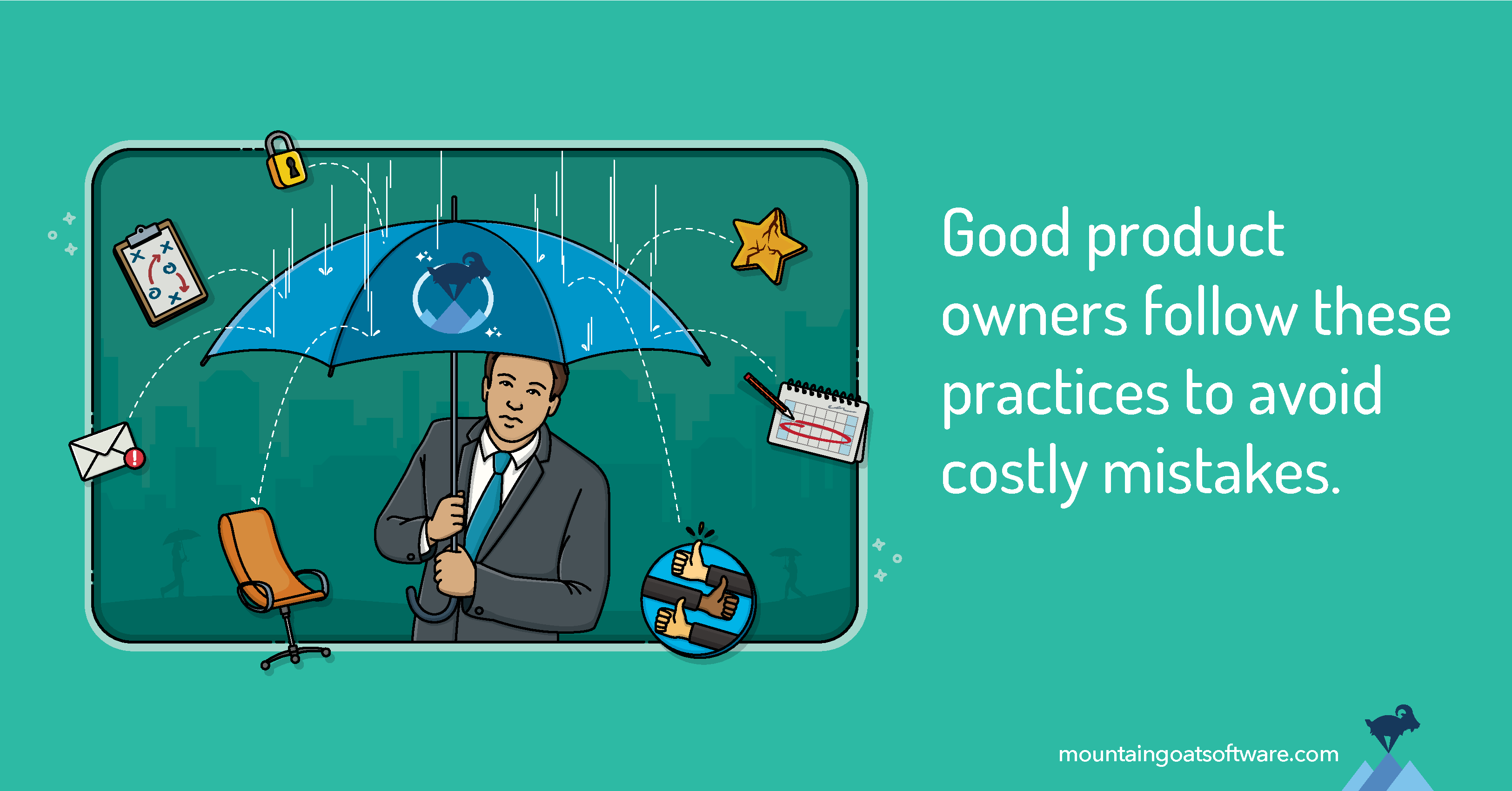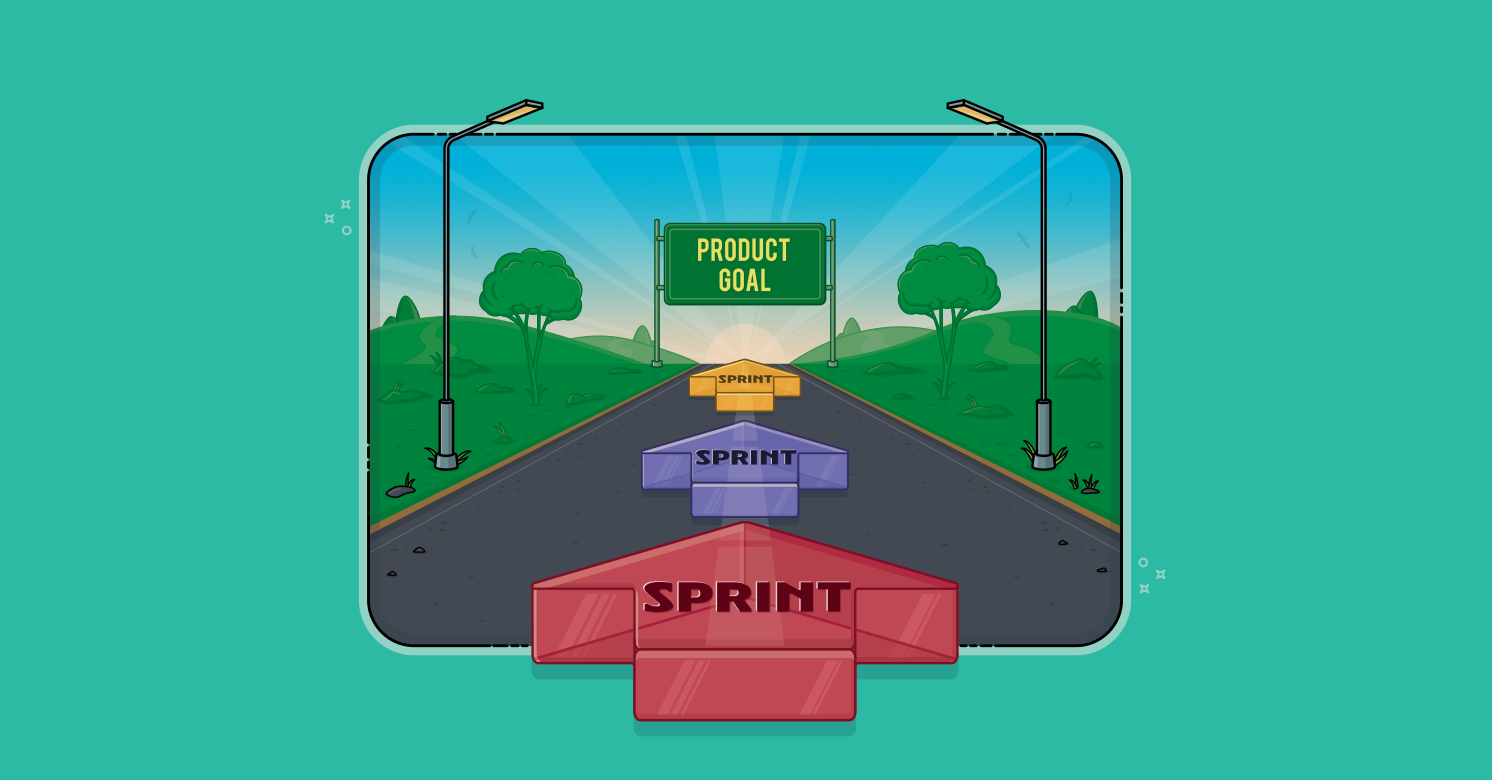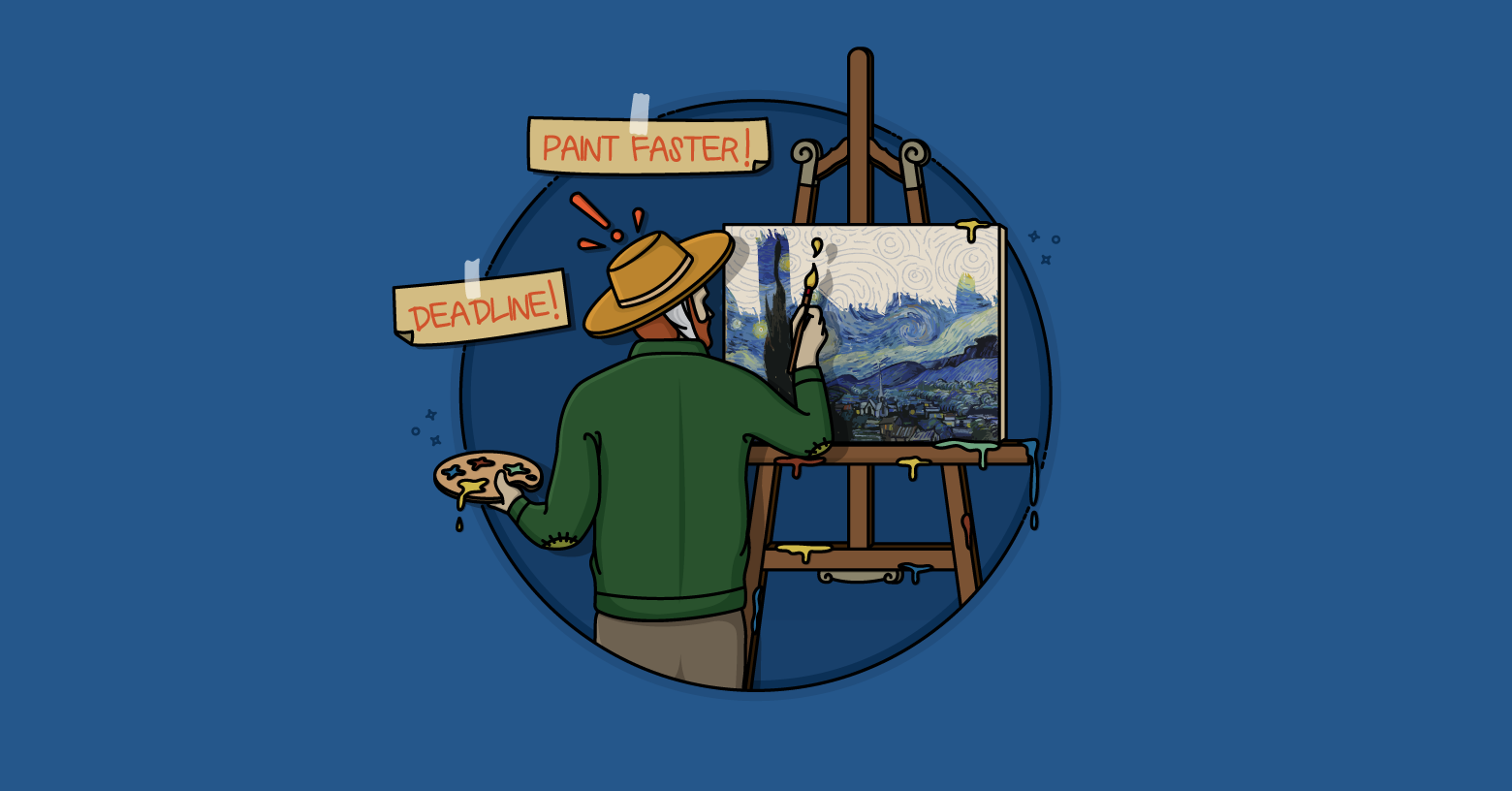What do product owners do? A ton! They work to keep stakeholders, customers, and users happy. They do market research and examine data to help keep the product on the right course.
Product owners work closely with team member and make themselves available to answer questions about work in the current sprint. And they ensure the team has a steady stream of new user stories for future sprints.
The product owner role and responsibilities are vast. Good product owner follow good practices so that they can avoid 7 costly mistakes.
Product Owners Try Not to Interrupt the Sprint
Good product owners tell the development team that what they work on will not change after a sprint has been planned. But that’s a hard promise to keep when customers and stakeholders change their minds or come up with new needs.
At some point, every product owner is tempted to make Mistake #1: Bring changes into a sprint rather than waiting for the start of the next.
And you know what? In some cases, that’s OK. Some changes are very important and worth interrupting a sprint. But many others are not. Product owners need to rein in the temptation to interrupt a sprint with something that only feels urgent because stakeholders are making noise about it.
Product owners can guard against these interruptions by soliciting the help of their Scrum Masters, letting them know it’s OK to push back any time they ask to bring something new into a sprint that's already in process. Most Scrum Masters know they should do this, but sometimes they’re afraid of pushing back. Let them know it’s OK.
I learned to keep my tendency to interrupt in check by writing the new ideas somewhere. Sometimes I put them in the team’s backlog tool. Other times I’d write an email and schedule it to send to myself the day before sprint planning so I’d remember to bring that new idea up. Getting the idea out of your head is often enough.
Product Owners Attend Sprint Meetings
While the Scrum Guide says it’s not mandatory for product owners to attend daily scrum meetings, the best product owners make every effort to participate whenever possible. If I had a way of identifying the, let’s say, 100 best Scrum teams I’ve ever worked with, I guarantee their product owners participated in their daily scrums.
Similarly, some product owners don’t attend sprint retrospectives. Or, just as bad, their teams don’t invite them.
A product owner is part of the overall Scrum team. A product owner's participation in these meetings demonstrates an openness to improve and encourages team members to improve as well.
Make a commitment to avoid Mistake #2: Skipping sprint meetings.
Product Owners Tell the Team What, Not How
Product owners are tasked with telling the team what they need to build. It’s the developers’ job to figure out how to fulfill that request.
Suppose your company plans to offer a pool table that will help players learn exactly where to aim. You tell the team that’s what you want. They decide the best way to do that. Perhaps it’s with a series of LED lights around the edge of the table. Perhaps it’s a voice command saying “left, left, left” until the cue is aimed perfectly.
You can avoid Mistake #3 (Telling a team how) by considering each product backlog item or goal you give a team. For each, ask yourself if you’ve left the team multiple ways in which they can fulfill the goal.
Product Owners Say No Often
Product owners set a product vision that will result in a product or solution that makes people happy.
The best way product owners remember that making people happy is not as important as building the right thing. They remember that for every request they say yes to, they are saying no to some other item.
In other words, they avoid Product Owner Mistake #4: Not saying no often enough. A hidden problem of saying yes to too much is that it might mean saying no later to an essential, emergent requirement that just hasn't been recognized yet.
Be careful in how far ahead you commit what a team will work on. And remember that it's in the best interest of the final product sometimes to say no.
Product Owners Prioritize Against Longer-Term Goals
Good product owners set slightly longer-term product goals that they use to help them prioritize, whether that's through a formal product roadmap or some other mechanism.
In doing so, they avoid Mistake #5: Going from sprint to sprint always pursuing what is most important at the start of the sprint.
I recommend setting quarterly product goals. A 3-month horizon provides a good balance between a long-term goal and one that feels achievable. Additionally, a 3-month goal is one against which a team can notice progress.
Product Owners Make Decisions & Clarify Responsibilities
Product owners need to make quick decisions so they don't slow the development process down. They also need to know that these decisions won't later be reversed by their boss, or some other higher-up in the organization. When a product owner is overruled routinely, team members quickly learn to think of all decisions as tentative.
Mistake #6 is To Not Have the Authority to Do the Job Well. A product owner who is lacking authority needs to have a conversation with the overruling party.
To structure that conversation, prepare by writing various product owner responsibilities each on its own sticky note (real or virtual).
Write things like
- Prioritize the backlog
- Determine release dates
- Provide feedback on implemented features
- And so on
Then collaboratively separate the items into piles of yours, theirs, and shared. Achieving this clarity of your responsibilities will often result in gaining more of the authority you need to fully succeed as a product owner.
Listen to Feedback with an Open Mind
Product owners need to keep an open mind and truly listen to feedback. Too many product owners make Mistake #7: Get overly attached to their vision and ignore feedback. They need instead to listen to customers, users, stakeholders, and, yes, developers too.
They don’t need to do everything suggested. But good products become great when product owners listen to feedback.
Juggle It All with Grace
Product owners are asked to juggle a competing demands on their time and attention. The product owner role is tough but when done right, results in great products that customers love.
Last update: May 18th, 2023









